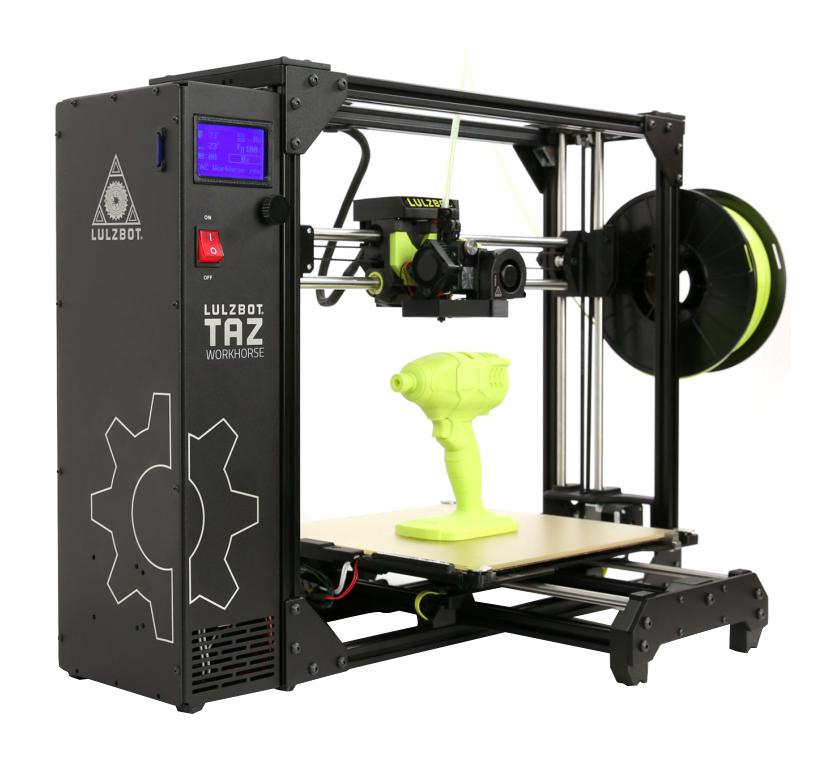Lulzbot Taz 6: 3D Printer Review 2 Years After Purchase!

LulzBot TAZ 6
LulzBot3D printer - FDM
AI summary
Overview of the Low Spot Tad 6 3D Printer
The Low Spot Tad 6 emerges as an intriguing option for 3D printing enthusiasts, particularly for its pioneering feature at the time of release: auto-leveling. This function, designed to simplify bed leveling by automatically adjusting to the print surface, highlights the Tad 6’s appeal for those seeking user-friendly printing solutions. However, the printer's performance and design reveal both strengths and weaknesses that prospective buyers should consider.
Auto-Leveling Functionality
One of the most lauded features of the Tad 6 is its auto-leveling capability. Initially, this set the Tad 6 apart in a market where manual bed leveling was the norm, aiming to provide a more efficient and less labor-intensive setup process. Despite its innovative approach, users have encountered challenges with the precision of auto-leveling. Misalignments within the printer's frame can lead to inconsistencies across the print bed, necessitating manual adjustments or modifications to achieve the desired levelness.
Maintenance and Usability Concerns
Maintenance of the Tad 6, especially in terms of keeping the nozzle clean for effective auto-leveling, has been flagged as a notable concern. The necessity for regular cleaning to ensure accurate bed leveling reflects a somewhat high maintenance demand compared to some other models. Additionally, issues with filament tangling and the effectiveness of the spool holder complicate the user experience, potentially leading to print failures or the need for additional user intervention.
Print Quality and Performance
When it comes to print quality, the Tad 6 is capable of producing functional, durable prints, particularly benefiting from its direct drive extruder feature which minimizes the chance of clogged nozzles. This makes the printer suitable for a range of materials and applications, from rapid prototyping to the creation of end-use parts. However, the visible layer lines and the level of detail may not meet the standards required for more aesthetic or fine-detail applications.
Considerations for Prospective Buyers
The Tad 6's initial market positioning as a higher-end, pre-assembled 3D printer highlighted its ease of setup and robust feature set. Nevertheless, the experiences of users suggest a balance between appreciating its build quality and functionality against the demands of maintenance and calibration. Moreover, the discussion on the printer's noise level and the time-consuming nature of auto-leveling prior to each print underscore the importance of evaluating how these factors align with one’s printing environment and patience for preparatory processes.
Comparison to Alternative Options
In reflecting on the value proposition of the Tad 6, it is crucial to consider the advancements in the 3D printer market. Comparisons with contemporary models, such as those offering similar features with lower maintenance requirements or more refined print quality at a similar or lower price point, may influence decision-making. Especially for those new to 3D printing, it's suggested to weigh the Tad 6’s ease of use against the ongoing engagement required for optimal operation.
Final Thoughts
While the Tad 6 stands out for its attempt at simplifying the 3D printing process through auto-leveling and other features, its practical application reveals a mix of benefits and challenges. The printer's suit for durable, functional prints and its direct drive system positions it as a reliable tool for specific needs. Yet, potential buyers must consider the maintenance, noise level, and the fidelity of prints relative to other options in the market. Ultimately, aligning expectations with the printer’s capabilities and limitations is key to a satisfactory investment in the Low Spot Tad 6.
